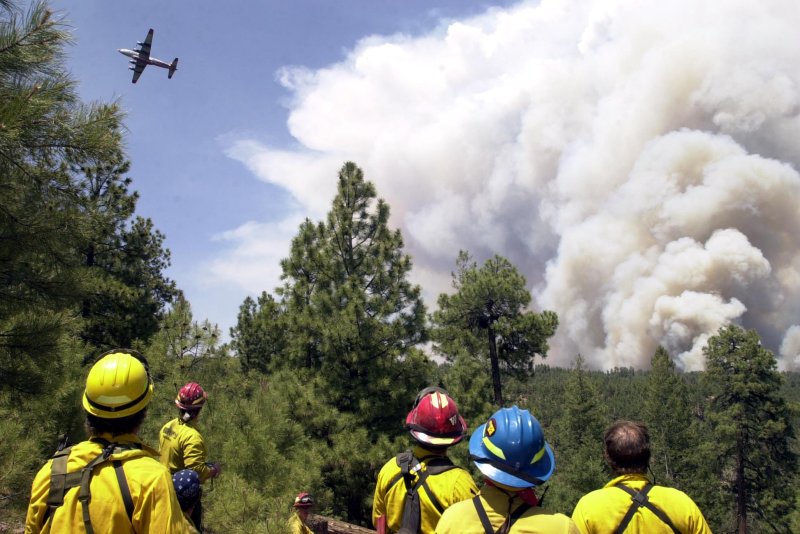New research suggests EPA measurements underestimate the pollution emitted by wildfire plumes. Photo by jaf/ps/Pat Shannahan/UPI |
License Photo
June 14 (UPI) -- New analysis suggests wildfires release three times the particulate emissions measured and published by the Environmental Protection Agency.
To get a more accurate measure of wildfire pollution levels, scientists from the Georgia Institute of Technology flew a variety of instruments and sensors through wildfire smoke plumes. The smoke featured much higher concentrations of aerosol-forming soot particulates than previously predicted.
"Burning biomass produces lots of pollution. These are really bad aerosols to breathe from a health point of view," Georgia Tech researcher Greg Huey said in a news release.
Wildfire emissions estimates used by the EPA are based on analysis of smoke plumes during controlled burns. The latest efforts offer a more accurate measure of wildfire pollution.
"We actually went to measure, right above the fire, what was coming out," said Huey.
Atmospheric scientists selected a variety of instruments for installation on a NASA research plane. The plane was flown through the plumes of three major wildfires.
The results and analysis of the effort were detailed in a paper published this week in the Journal of Geophysical Research: Atmospheres.
In addition to updated particulate estimates, the instruments measured the presence of a variety of toxins in the smoke plumes, including methanol, benzene, ozone precursors and others.
Researchers don't believe wildfires are a major source of toxic chemical pollution, but their particulate emissions are underestimated. Particulate matter, or aerials -- including dust, ash, shoot and smoke -- has been linked to heart and lunch disease, as well as cancer.
While industrial sources of pollution are more ubiquitous, they burn fuel more cleanly. Wildfires are more intense, burning much more fuel than controlled burns.
"A prescribed fire might burn five tons of biomass fuel per acre, whereas a wildfire might burn 30," said Bob Yokelson, a professor of atmospheric chemistry at the University of Montana. "This study shows that wildfires also emit three times more aerosol per ton of fuel burned than prescribed fires."















